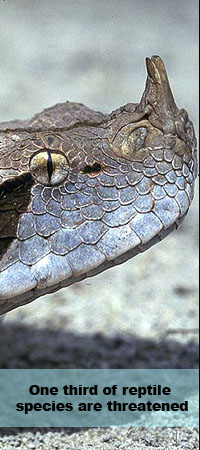|
Reptiles were the first species that could reproduce on dry land. The majority of species lay amniotic eggs which are protected by a leathery or hard shell. Some females are able to store sperm with which to fertilise their eggs for many months, or even years. In many cases the female will dig a borrow in which to lay her eggs, providing the eggs with protection and temperature regulation. When the young hatch as fully developed miniatures of their parents, they must fend for themselves.
Although most reptiles abandon their eggs as soon as they lay them, python mothers coil around her eggs to help keep them warm and safe. Crocodilians return to the nest when the babies start to hatch, then help them to emerge and carry them to water. Young crocodilians may stay with their mother for up to 3 years, as they benefit from her protection, and may also feed on small scraps of her food.
Sea turtles undertake amazing migrations to lay their eggs. Although after hatching they swim the oceans in search of food, they may travel 1000s of km to return to the exact beach where they were born, in order to lay their own eggs. How they manage this incredible feat of navigation is still poorly understood.
Temperature regulation is very important for the development of reptile eggs – as well as determining the rate of growth of the embryos, for crocodilians, tuataras and many species of turtle and lizard, the temperature of the eggs determines the sex of the embryos. Usually higher temperatures produce the larger sex, so for crocodiles, higher temperatures produce more males, whilst for turtles it would mean a greater number of females.
Some snake and lizard species are viviparous, meaning they give birth to live young. Even rarer, there are parthenogenetic reptiles, such as several species of gecko, which are all-female species that produce offspring genetically identical to the mother, without the need of a male.
Ectothermic
Despite being known as ‘cold-blooded’, the temperature of the blood of ectothermic animals is usually about the same as your own. The difference is that warm-blooded (endothermic) animals such as humans can heat their own blood to the right temperature, whilst reptiles must rely on external sources to gain their body heat. Even so, reptiles have very precise thermoregulation through both physiological and behavioural responses. For instance, lizards and snakes like to bask in the sun to warm their body temperature up, or hide in the shadow of a rock to keep cool.
Marine Iguanas (Amblyrhynchus cristatus) on the Galapagos Islands can manage to heat the body temperature up sufficiently to allow them to swim in the cold waters of the Pacific for up to half an hour at a time. Once they emerge, they need to heat back up again.
Other reptile facts:
Reptiles can’t chew, so must tear lumps off or swallow their food whole. Snake skulls are composed of unfused bones which allow them to swallow prey even larger than their heads.
About 500 species of snake use venom for hunting and defence, though only about 30 are considered harmful to humans. A few other reptiles are also venomous, such as the gila monster (Heloderma suspectum) and beaded lizard (Heloderma horridum).
Chameleons can change colour. Although their colouration usually acts as camouflage, they can use colour change as a form of communication, and may even turn pink, blue or red.
Some reptiles have senses that we humans do not. For instance, snakes can locate their warm-blooded prey with infrared-sensitive receptors, and turtles can navigate using the Earth’s magnetic fields (magnetoception).
Continue on page 3
|
|
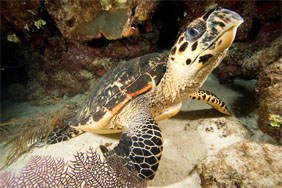
Hawksbill turtles Eretmochelys imbricata undertake amazing migrations to lay their eggs. © Paddy Ryan
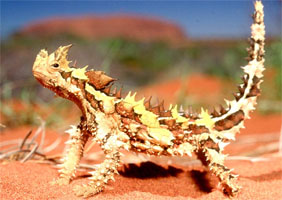
The thorny devil Moloch horridus from Australia usually basks on early mornings. © Paddy Ryan
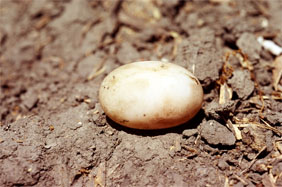
Egg (hard shell) of western pond turtle Actinemys marmorata.© Pierre Fidenci
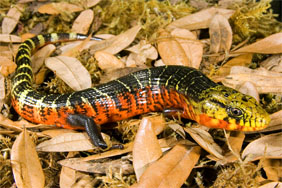
The Kuhl's galliwasp Diploglossus monotropis is diurnal skink-like lizard from South America south and east to central southern Brazil. © Paddy Ryan
|

